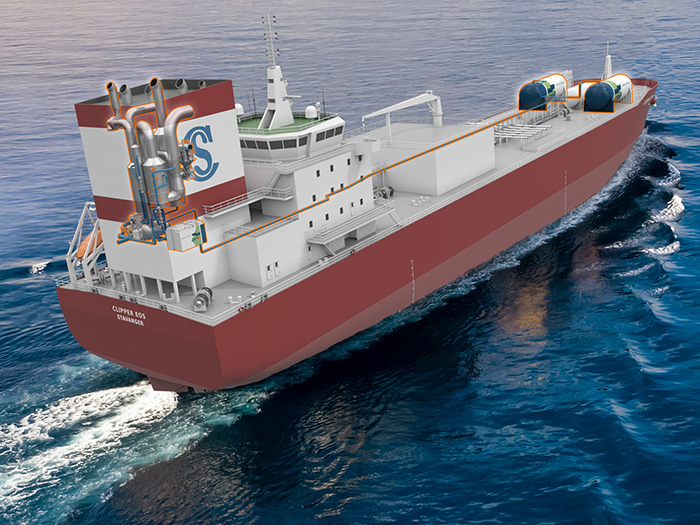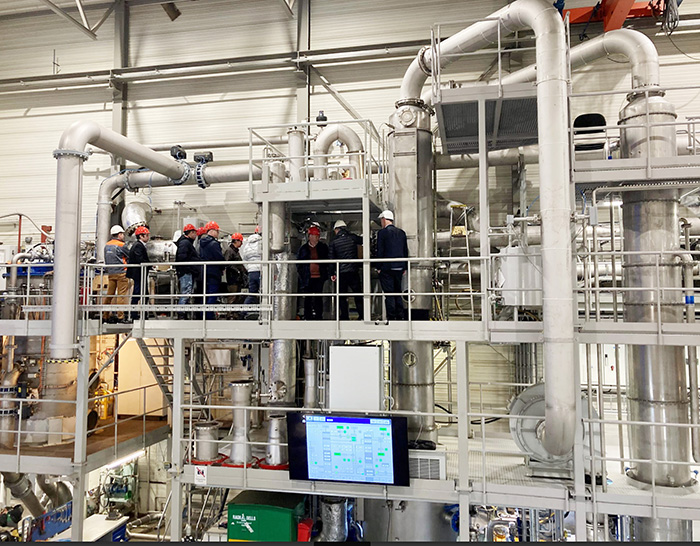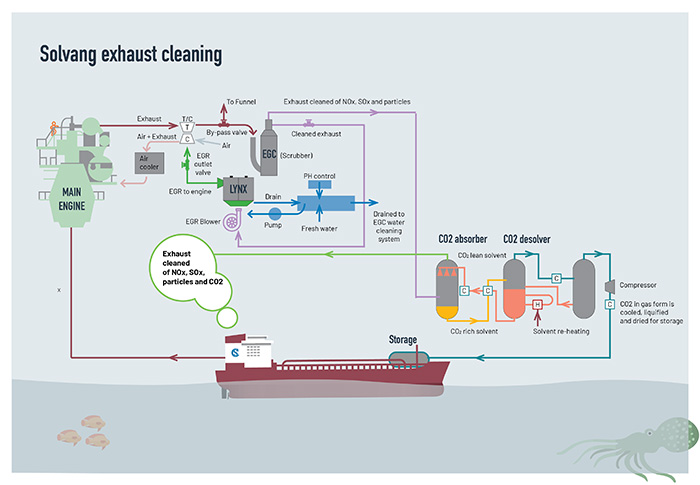
Solvang sees CCS and HFO as shipping’s greenest option
Written by Nick Blenkey
Solvang’s Clipper EOS will soon be fitted with an upscaled CCS solution
Norwegian ship operator Solvang ASA sees on-board carbon capture and storage (CCS) as potentially “the big game changer” in meeting shipping’s decarbonization goals.
Currently there is no working technology for shipboard CCS, and deep-sea transportation has no access to the amount of e-fuel necessary to replace conventional fuel oil, HFO/LSFO.
Solvang says it’s about to change that.
The company has spent 20 years optimizing engine operation, emission cleaning and exhaust recirculation to benchmark conventional heavy fuel oil (HFO) with LPG, LNG, biofuels and others in terms of greenhouse gas (GHG) emissions.
However, after removing NOx, SOx, and other pollutants from the exhaust, the problem with CO2 remains, since there can be no combustion without carbon output.
“There are no easy solutions, so we are looking for the big game changer: To avoid CO2 emissions by means of capture and storage,” says Solvang CEO Edvin Endresen.
Last fall, Solvang launched a vessel-scale CCS project in collaboration with Wärtsilä Exhaust Gas Treatment. The goal is to capture CO2 from main engine combustion before it passes through the exhaust outlets. A complex carbon separation process takes place inside the smokestack, resulting in liquid CO2 being transferred to deck tanks, ready for long-term storage or industrial reuse.
A complete setup of scrubber plus CCS installation is already running on a 1.2 MW full-scale test environment at Wärtsilä´s facility in Moss, Norway.

“The system already runs up to 60% carbon capture on some engine loads, which has never been done before. Furthermore, initial indications are that the CO2 captured is very pure, with little or no product contamination,” says Endresen.
Soon, an upscaled solution will be installed on the Solvang ethylene carrier Clipper Eos, where it will serve the vessel’s 7 MW main engine. By the middle of this year, an electrostatic filter will be installed in the ship’s exhaust gas cleaning system, a first-time experiment in ship engine history.
If everything works well, a carbon absorber and stripper units will be installed towards the end of 2023, as well as modification of liquefaction systems to cater for deck tanks. Over the following two years, a complete CCS setup will operate alongside the existing scrubber and exhaust gas cleaning systems onboard Eos, providing a steady stream of live data.
“The scheduled combination of CCS, scrubber and Solvang´s low-pressure EGR system will handle CO2, NOx, SOx, particles, CO and unburnt fuel from the HFO combustion. If applied to deep sea shipping as a sector, it constitutes a great step towards net-zero emission,” says Solvang fleet manager Tor-Øyvind Ask.
HFO: LIFE-CYCLE WINNER?
Without carbon capture, says Solvang, there is only a 10-15% potential reduction in GHG emissions from fossil fuels such as MGO, VLSO, LPG, LNG and HFO – as opposed to climate goals where the target is net zero. If highly potent greenhouse gases such as methane escaping as methane slip are included, LNG may score particularly low, it notes.
When shipboard CCS becomes available, says Solvang “HFO turns out to be the climate-winner among fossil fuels,” when accounting for carbon from a life-cycle perspective that includes extraction of the oil through the mileage of its carriage as cargo, often called well-to-wake.
After CO2 extraction, argues Solvang, HFO scores better than all other fossil fuels, but it also challenges electro fuel (e-fuel) due to processing costs like coal-fueled generation of electricity affecting its life-cycle CO2 budget. Even when e-fuel comes from zero emission sources, there is little hope to cover deep sea shipping with this energy source within the next decades.
“To expect all sectors to plunge emissions at the same time will not work. Air traffic will place the highest bid for e-fuel, leaving shipping to opt for other fuel types,” says Ask. “CCS is something we can do within a few years. When the world has sufficiently green energy, the captured CO2 can be transformed into electro fuel. Summed up, we offer a bridge into decarbonized deep sea shipping, thereby contributing seriously to our common future.”





